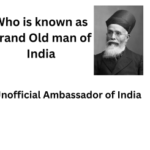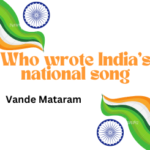INDIA, JAPAN MOU ON SUSTAINABLE, STABLE AND LOW CARBON THERMAL POWER DEVELOPMENT APPROVED

The union cabinet accorded ex post facto approval to an agreement between India and Japan for promoting sustainable and low-carbon thermal power development.
The proposal includes undertaking activities such as update on the current and future policy trend in Indian power sector with wide coverage from renovation and modernisation and life extension to new power development in India.The pact also provides for identifying barriers that could be addressed through mutual collaboration by the Central Electricity Authority and Japan Coal Energy Centre.
Both nations will identify issues to be addressed regarding existing and upcoming facilities, and also operation and maintenance at either of them, the statement added. The MoU also provides for consideration of justifiability and feasibility of individual cases of power development based on thermal power generation technologies in terms of funding from the existing financial instruments and other available bilateral financial schemes. There will be an annual workshop in India and in Japan for bilateral knowledge and technology exchanges, the statement said.
CROSS REFRANCES
INDO JAPAN RELATIONS
Japan and India share fundamental values such as freedom, democracy, human rights and the rule of law and strategic interests.Exchange between Japan and India is said to have begun in the 6th century when Buddhism was introduced to Japan. Indian culture, filtered through Buddhism, has had a great impact on Japanese culture, and this is the source of the Japanese people’s sense of closeness to India.
Japan and India signed a peace treaty and established diplomatic relations on 28th April, 1952. This treaty was one of the first peace treaties Japan signed after the World War II.
Ever since the establishment of diplomatic relations, the two countries have enjoyed cordial relations. In the post World War II period, India’s iron ore helped a great deal Japan’s recovery from the devastation. Japan started providing yen loans to India in 1958, as the first yen loan aid extended by Japanese government. Since 1986, Japan has become India’s largest aid donor, and remains so.
Prime Minister Yoshiro Mori’s visit to India in August 2000 provided the momentum to strengthen the Japan-India relationship. Mr. Mori and Prime Minister Atal Bihari Vajpayee decided the establishment of “Global Partnership between Japan and India“. Since Prime Minister Junichiro Koizumi’s visit to India in April 2005, Japan-India annual summit meetings have been held in respective capitals. When Prime Minister Manmohan Singh visited Japan in December 2006, Japan-India relationship was elevated the “Global and Strategic Partnership“.
In September 2014, Prime Minister Modi paid an official visit to Japan and had a summit meeting with Prime Minister Shinzo Abe. They agreed that Japan-India relationship was upgraded to “Special Strategic and Global Partnership.” In December 2015, Prime Minister Abe paid an official visit to India and had a summit meeting with Prime Minister Narendra Modi. The two Prime Ministers resolved to transform the Japan-India Special Strategic and Global Partnership into a deep, broad-based and action-oriented partnership, which reflects a broad convergence of their long-term political, economic and strategic goals. They announced “Japan and India Vision 2025 Special Strategic and Global Partnership Working Together for Peace and Prosperity of the Indo-Pacific Region and the World” a joint statement that would serve as a guide post for the “new era in Japan-India relations.” Following their meeting, the two Prime Ministers issued a Joint Statement and a Fact Sheet agreeing to expand bilateral cooperation in a wide range of areas including in the fields of civil nuclear energy, high-speed rail (bullet train) network, defence equipment & technology, taxation, science & technology, investment, education, disaster relief and people-to-people exchanges. 16 Agreements/MoUs/ MoCs/ LoIs were exchanged during the visit. In a special gesture, India also announced “visa on arrival” scheme for all Japanese travelers, including for business purposes, from March 1, 2016. (This has since been implemented). PM Abe, accompanied by PM Modi also visited the city of Varanasi, which signed a partnership agreement with the city of Kyoto in August 2014. A ‘Japan-India Make in India Special Finance Facility’ of JPY 1.3 trillion was also established during the visit of PM Abe to India in December 2015.
In addition to the annual summit meetings, annual Strategic Dialogue at Foreign Minister-level has been held in respective capitals since 2007. The launch of Ministerial Level Economic Dialogue was agreed during Prime Minister Singh’s visit to Japan in October 2010.
There are also various frameworks of security dialogue between Japan and India. During Prime Minister Singh’s visit to Japan in October 2008, two leaders issued “the Joint Declaration on Security Cooperation between Japan and India”. Furthermore, to advance security cooperation based on the Joint Declaration, Action Plan was issued during Prime Minister Hatoyama’s visit to India in December 2009. The Comprehensive Security Dialogue at the level of Joint Secretary / Director General level was set up in 2001 and eight rounds of dialogue have been conducted since then. Annual Subcabinet / Senior Officials 2+2 dialogue, which was agreed to establish in 2009, was held in New Delhi in July 2010.
Maritime Self Defense Force (SDF) joined in the “Malabar 09” which was co-hosted by U.S. and India in April 2009. At the annual summit in December 2011, Prime Minister Noda and Prime Minister Singh affirmed that they would expand cooperation in the area of maritime security, including safety and freedom of navigation. Between the coast guards, combined exercises on anti-piracy, search & rescue etc. have been conducted since 2000.
The Japan-India Comprehensive Economic Partnership Agreement (CEPA) took effect in August 2011, which will eliminate about 94% of the tariffs between Japan and India within 10 years; it covers not only trade in goods but also Services, Movement of Natural Persons, Investments, Intellectual Property Rights, Custom Procedures and other trade related issues. Agreement between Japan and India on Social Security was signed in November 2012.
India has been the largest recipient of Japanese ODA Loan for the past several years. Delhi Metro is one of the most successful examples of Japanese cooperation through the utilization of ODA. The Dedicated Freight Corridor (DFC) and the Delhi-Mumbai Industrial Corridor (DMIC) are two symbolic projects of cooperation between Japan and India. Both governments held “Japan-India Exchange Year 2007” both in Japan and in India to commemorate the 50th anniversary of the Cultural Agreement.The year 2012 marked the 60th Anniversary of the Establishment of Diplomatic Relations between Japan and India.






0 Comments